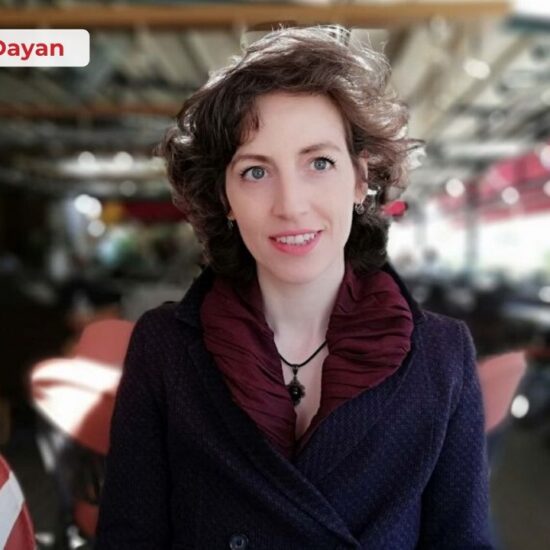Only children and novelists believe in dragons; they can see, hear, and speak with them… Nihan Kaya is one of those novelists. This essay discusses her novel Kırgınlık (Resentment), which debates the importance of narration and character in the art of the novel.
This book speaks in the language of wounded souls. If, despite the world’s overwhelming pollution, a child still resides somewhere within you, perhaps you can’t speak with a dragon, but the language of the book will touch your heart. The novel, crafted by the pen of a woman who loves children she never gave birth to through her intuition, will captivate you, even if the heroes of the novel are not always children… When I finished the last sentence of the book and closed its cover, I pondered how to describe the lingering taste, and the first sentence that came to mind was this.
The fantasy elements in the novel do not interrupt its emotional atmosphere in the slightest.
The author presents us with a story structure that spans both time and geography. The opening scene introduces Osman Ali, who would still be considered a child, in 1947, at a deserted train station, with a mother who is resigned to the death of her daughter…
Then, we shift to 1995. Two writers continue their verbal exchange through the pages. What began as a conversation about writing a novel turns into a discussion about women and family.
Next, we travel to a coastal town in the Black Sea region. It’s a time when women could not walk, carefree and with their hair flowing, except for one person… A figure who, with her flowing hair, imposing physique, and colorful clothes, seems like a carnival: Şenlik Bacı, whose name has likely been forgotten over time. Şenlik Bacı, skilled and living off her unmatched art, sells her handmade items, such as towels and curtains. The women in the town believe her work somehow protects their husbands. But Şenlik Bacı’s mind is not quite right; she is obsessed with the daughter she claims to have lost. Throughout the story, we are left to wonder whether the lost daughter is really hers, or if it’s her lost youth and girlhood. By the end, we realize that the innocence of Şenlik Bacı is also the curse of the town and those who cross its path.
Then, we encounter Kar (Snow). She was born red and, in her quest to make everyone happy, turned white. (Actually, she could have been Karin, but her mother called her Kar.) The pages flow with the rebellion of a woman, always hunched and slightly bent, whose mother is a writer…
“How much pain I feel from taking up space in the universe, every woman knows. This is why women are always trying to lose weight. This is why women always think they are fatter than they actually are. A woman is most acceptable in the eyes of the world the less space she takes up with her body, actions, thoughts, and choices.”
When it came to the wall, my melancholic mood was shattered. I didn’t understand the outcome until the final sentences. In this part, the author presents a perspective similar to Foucault. In the next two chapters, we meet Michele, a character I initially saw as a weak woman.
In Petunya, there is a lonely, entrusted love that one character lives alone, and at the end of the story, I understood it with a bittersweet smile.
Red is sensitive, a kind of pain that feels like it could pierce your flesh… The long-term sexual abuse of a child is described in short flashbacks, witnessed by another child.
Then there is Süt (Milk). A suspicion of child abuse, a murder… On the essence of being, and all the concepts that divide us… My body ached again, but this sentence from the book became my favorite: “You can tame the girls raised by wolves; but a girl raised by books, even if you squeeze her flesh in a vice, will never conform to this world.”
Ses (Sound) is a very short chapter that only some women, or rather “some” women, can understand. I took my own story. And I write this much just to arouse curiosity in the reader.
Divane (Crazy) might be interpreted as a beautiful love explanation, but I understood it as a portrayal of a sick love. But the way it conveys that emotional state is so beautiful… If you’ve lived through those days, it will take you back.
Paf is a dragon, not green but the color of lapis lazuli, a precious stone. He is friends with a little boy named Jackie Paper. But when Jackie grows up and starts prioritizing other things in life, Paf retreats into a cave. Many years later, he writes a letter to Nihan Kaya. In their correspondence, Nihan Kaya tries to awaken the hope within Paf once again. Eventually, Nihan Kaya offers her mercy and love to all the children she never gave birth to, as if in the last chapter, Kuğu (Swan), she bids farewell by speaking to the mothers of those children.
It’s as if every wound of every broken soul in the world also hurts her, a novel that comes from a color that doesn’t belong to this world. I’m sure her psychology education has had a significant impact on this, or perhaps because she is such a woman, she has shaped her path in the world to better understand. She has published other novels before, but they never crossed my path until now. After the taste left by Kırgınlık, I’m eager to read her other works…
Gizem İspir
December 18, 2017


